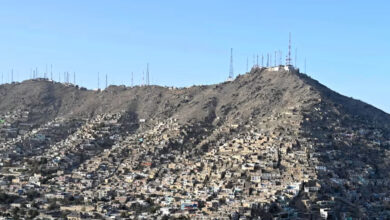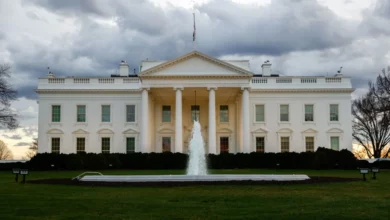In the first part of our series "Cultivation and Control" Al-Masry Al-Youm examines the historical role of the Culture Ministry in shaping the cultural sphere. Over the coming weeks, we will look at various attempts at reform, galvanized after the revolution, hoping to offer insights on persistent debates.
Like other sectors across the country seeking a smooth transition to democratic reform since the toppling of Mubarak in February, Egyptian artists and intellectuals are trying to reform the state’s massive cultural institutions.
Almost six decades after its establishment by Nasser’s regime in the fifties, the Culture Ministry’s once total hegemony over the cultural field seems on the verge of complete erosion.
For one thing, its legitimacy has been challenged by repeated corruption cases. In 2008, Ayman Abd al-Moneim, head of the Culture Development Fund, and Abd al-Hamid Kotb, the technical manger of the Supreme Council of Heritage, were convicted of bribery and appropriating public funds after assigning projects such as the renovation of the Hanager Center to particular businessmen.
And despite its large budget compared to private cultural entities, many artists have been driven away by the continuous censorship, increased bureaucracy, and declining artistic and technical standards.
“We have no theater, no cinema, no research, no education. We only have festivals and conferences and a box full of lies,” was how Egyptian novelist Sonallah Ibrahim described the state’s influence on the cultural field in his 2003 speech, rejecting its International Conference on the Arab Novel award.
And indeed, Egyptian bestsellers over the past five years were produced by writers and private publishing houses unaffiliated with the ministry. Alaa al-Aswany’s “Yaacoubian Building”, Galal Amin’s “Whatever happened to the Egyptians?” and “Taxi” by Khaled al-Khamissi, are but a few examples.
But understanding the state’s role in local cultural production is only possible through an examination of the history of the Culture Ministry, which until recently governed almost every aspect of cultural production, before private institutions and NGOs began to emerge over the past decade.
The state’s Theater House oversees national theaters; the Cinema Production Apparatus and Chamber of Cinema Industries play a similar role in relation to films; and the Supreme Council of Culture oversees creative production in the field of visual arts and literature. Other artistic forms have been governed by the Cairo Opera House, the Culture Development Fund, complex legislation, and a notorious Board of Censors, while state honorary prizes, the ministry’s External Cultural Relations Sector, state-owned publishing chains, the National Project for Translation and numerous national and international cultural festivals acted as subtler tools of guidance.
It was the 1952 revolution that granted legitimacy to state oversight of the cultural sector. By the end of the fifties, the Nasserist regime had achieved a complete monopoly over media and culture institutions through a massive nationalization program and the first Ministry of National Guidance. In 1958, the ministry’s role expanded to include culture and it was renamed the Ministry of Culture and National Guidance, under Tharwat Okasha, an intellectual who also happened to be one of the 23 July officers.
Through such measures, the cultural was manipulated in favour of the political. Under Nasser, it was unthinkable that one might join official cultural or artistic professions unless one showed pro-regime convictions. The most glamorous stars of the era in music, cinema, theater and journalism spared no effort in showing blind support to Nasser’s political orientations, offering social justice instead of social freedoms and democracy. Artists like Abd al-Halim Hafez and Om Kalthoum sang for Nasser, promoted his programs and helped reinforce his image as the “leader of the nation".
Opponents to the ruling regime, such as Communists, were marginalized – at times imprisoned in Nasser’s detention camps. Censorship grew and the security apparatus monitored cultural activities. In 1954, journalist and novelist Ihsan Abd al-Kodous was put in military jail for writing an article titled “A secret assembly ruling Egypt,” discussing state practices believed to subvert the 1954 Constitution and paving the way for Nasser’s military rule.
Still, the cultural field experienced a boom in the sixties partly as a result of the state’s vision to disseminate political awareness and “enlightenment” to the masses. Public cultural centers were built across Egypt starting 1965. Theatre in particular witnessed shows by a promising “modernist” current that reflected social debates about independence, freedom and justice. In the sixties, Egyptian theater mixed popular themes with avant-garde experimentation. Alfred Farag’s “Barber of Baghdad” (1963) and “Soliman al-Halaby” (1965) were inspired by Arab folklore, while Salah Abdel Sabour mastered the epic form in “Al-Halag Tragedy” (1964) and “The Queen Awaits” (1969). Influenced by the works of Bertolt Brecht and Peter Wiess, leftist playwrights like Naguib Sorour, Mahmoud Diab and Michael Roman went even further, laying the foundations of political theater.
The number of translated and published books multiplied, and the emergence of “modernist realism” could be felt in music and cinema. Popular cultural production functioned as part of the renaissance discourse that served the socialist project of the Nasserist state. Films and songs used the values of a rising middle class, yearning to bridge the gap between emancipation values, enlightenment discourses and authentic traditions.
Many novels by Abd al-Kodous, Naguib Mahfouz and Latifa al-Zayat were turned into screenplays, starring icons like Faten Hamama, Soad Hosny, Kamal al-Shennawy, Shadia, Ahmed Mazhar and Omar al-Sharif. And poets and lyricists like Salah Jahin, Abdel Rahman al-Abnoudy and Morsi Gamil Aziz, along with musicians like Kamal al-Tawil, Mohamed al-Mougy and Baligh Hamdy, led a radiant movement to revolutionize Egyptian song, modernizing music and liberating its content and performance style from Turkish traditions.
From 1966 until Anwar al-Sadat’s assassination in 1981, the ministry’s focus changed repeatedly; at times culture, information and education were grouped under one ministry; at others the Culture Ministry was abolished altogether. Yet, eventually, the Culture Ministry’s oversight continued to expand, encompassing the Academy of the Arts in 1959, the General Egyptian Book Organization in 1971, the National Archives in 1977, the Supreme Council of Culture in 1980, the Cairo Opera House in 1988, the Plastic Arts Sector in 1988, the Culture Development Fund in 1989, the General Agency for Cultural Palaces in 1989, the Supreme Council of Heritage in 1994, and the National Organization for Urban Harmony in 2001.
Witnessing the liberalization of the cultural field and the rise of Islamist movements brought about by Sadat’s Open Door Policy in the seventies, Mubarak attempted to re-establish his grip on the cultural field.
In 1987, he appointed Farouk Hosni – the artist-minister – to head the ministry, and it was Hosni who devised the state’s cultural policies until the cabinet reshuffle in January of 2011.
Hosni’s tactics were subtler than his predecessors. His cultural policies sought to maintain control over cultural production, while advocating a secular and democratic image in the face of global pressures. Hence, a level of social, cultural and economic critique was allowed by the state, so long as intellectuals, eventually, bestowed legitimacy on the ministry and hence the ruling regime.
The Supreme Council of Culture, the ministry’s weekly newspaper Al-Qahira, publishing chains and Suzanne Mubarak’s “Reading for All” project successfully provided jobs for intellectuals and artists, improving their living conditions and empowering them with authority and influence from within the system. Specialized committees appointed by the ministry made the selections and nominations for both state awards and participation in Arab and international festivals. In many cases, however, job offers and nominations came at the expense of intellectuals’ relative independence from the political regime. While still in office, Hosni repeatedly boasted how he had successfully “brought intellectuals back to the barn.”
Over the past decade, the state’s attempt to impose its influence on the cultural scene was gradually challenged. Private satellite channels, newspapers, theaters and cultural NGOs emerged and offered artists and intellectuals more artistic freedom.
Cultural programming at the al-Sawy Cultural Wheel and al-Genina Theater, for instance, attracted a young audience that exceeded those attending state theatres in terms of its size, while the theaters at the Opera House and the state’s creativity centers suffered from a constant deterioration in the degree of freedom they allow and a frustrating bureaucratic performance.
Still, the state remains a key player in the cultural field in terms of legal, organizational and funding issues. And now, with calls for democracy, freedom and social justice brought to the forefront by the 25 January revolution, cultural activists and intellectuals are trying to reclaim and reform its institutions, rethinking the state’s relationship with the cultural arena.
Replicating the bitter experience of nationalization seems both impossible and undesirable. Instead, a number of propositions are currently underway at various institutions, including the National Cinema Center and theater houses. Over the coming weeks, Al-Masry Al-Youm will be examining these efforts more closely, highlighting ongoing debates and contentions.




